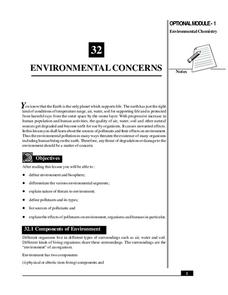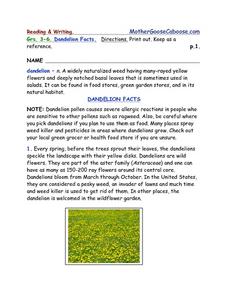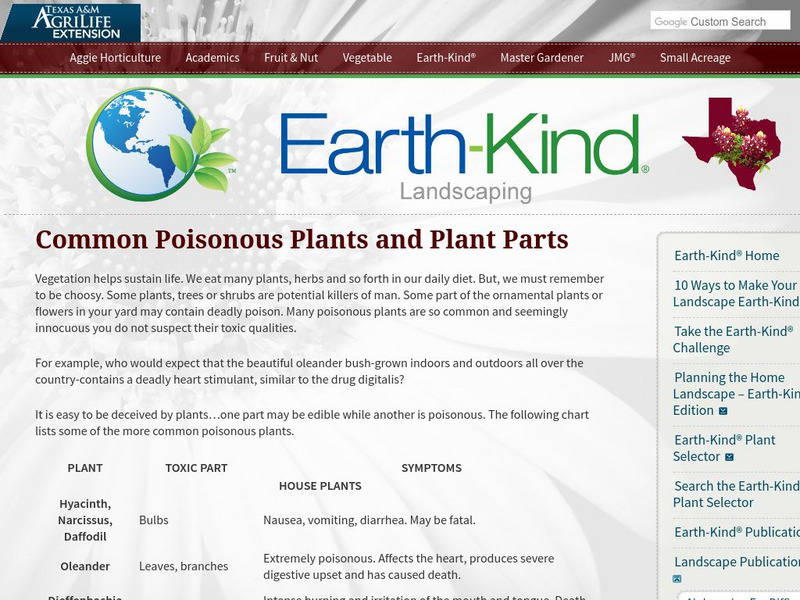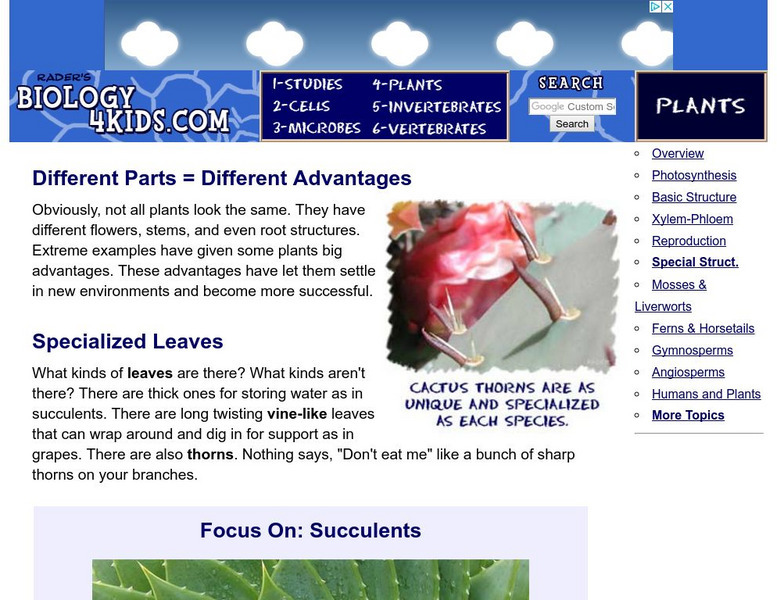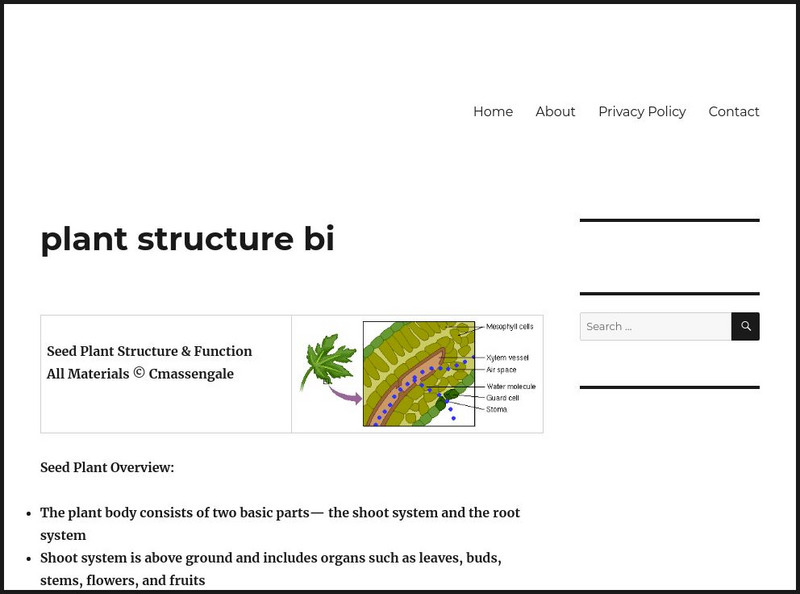Cornell University
Weed IPM
Go on a weed hunt! Scholars gain insight into the characteristics of plants and examine the outdoor environment in order to identify five different types of weeds. Learners then show what they know with a one-page reflection.
Curated OER
Bee Pollen Popular
The world would be a much different place without the help of pollinators. Read about the important role bats, hummingbirds, and various insects play in plant reproduction, exploring the interdependence of living things in an ecosystem....
American Chemical Society
Isolation of Phytochrome
Why do soybean plants that are planted weeks apart in the spring mature simultaneously in the fall? Four independent activities cover the history of phytochrome research, scientist collaboration, the electromagnetic spectrum, and...
Rainforest Alliance
Protecting the Critical Habitat of the Manatee and Loggerhead Turtle
Explore ocean habitats with a lesson that showcases the home of manatees and loggerhead turtles in Belize. Here, pupils compare and contrast the homes of ocean animals to those of humans, listen to an original short story about...
Wilderness Classroom
Pollution
Educate scholars on pollution—air, water, and land—with a series of lessons that begin with a thorough explanation of each type. Learners then take part in three activities to reinforce the importance of reducing pollution. They...
National Institute of Open Schooling
Coordination Compounds
Cyanide, a coordination compound, is used in the extraction of gold and silver. Part 24 in the series of 36 delves into the world of coordination compounds. Classes learn, through readings, discussions, and answering questions, how to...
Cornell University
Field Day: Be an IPM Detective
Become a pest detective! Individually or in small groups, scholars scout the land to discover which pests—plant and animal—inhabit it, determine whether the pests are endangering the environment, and summarize their findings.
It's About Time
The Changing Geography of Your Community
Lead your class in exploring their local communities as well as the general environment. As they determine continental distributions by investigating minerals, rocks, and fossils located in their local region, pupils construct...
Wildwood Trust
Habitats
The circle of life is all around us, from the black bears in the nearby mountains to the pile of dead leaves in the backyard. Encourage young scientists to take a critical look at the world around them with a set of lessons...
Kentucky School for the Deaf
Levels of Organization within an Ecosystem
From tiny organisms to entire biomes, young scientists examine the interdependent relationships tying all living and non-living things together with this collection of ecology resources.
National Institute of Open Schooling
Environmental Concerns
Every year, more than 14 billion pounds of garbage is dumped into the oceans of the world, most of which is plastic and toxic to ocean life. Lesson 32 in the series of 36 focuses on environmental concerns, specifically pollution. Under...
Curated OER
Dandelion Facts- Reading and Writing Worksheet Packet
In this set of worksheets about dandelions, students read the definition and 10 pages of facts about the common weed. They look at pictures that are related to the facts.
Ohio State University
Ohio State University: Plant Part Glossary
A useful resource for working with plants. Many illustrations enhance the clarity of the definitions, which can be accessed by clicking on the various links provided.
Texas A&M University
Texas A&m Agrilife Extension: Common Poisonous Plants
An article on common poisonous plants and plant parts.
Missouri Botanical Garden
Missouri Botanical Garden: Biology of Plants: Plant Parts
Learn about the basic parts of a plant and their jobs.
Biology 4 kids
Biology4 Kids: Different Parts = Different Advantages
A concise reference highlighting the specialized parts of plants and the jobs they do.
Other
Poison and Drug Info. Center: Poisonous Plants
This illustrated catalogue of poisonous plants includes a brief description of each, lists poisonous parts and the symptoms of human contact.
Environmental Education for Kids
Eek!: Wetland Plants
Some wetland plants grow completely underwater, others grow partly submerged, and some grow in places were the ground is often wet. Learn about a variety of wetland plants in Wisconsin.
Center for Educational Technologies
Earth Science Explorer: Taiga Biome: Plants
As part of a virtual museum visit, this site offers a look at the plants of the Taiga Biome. Content includes a look at plant adaptations.
Other
Rose Hills Foundation Conservatory for Biological Science
All about plants has information on plant parts--seeds, flowers, fruits, roots, and spores--and plant processes--seed dispersal, germination, pollination, and photosynthesis. You can also take a tour of this Los Angeles-based...
Smithsonian Institution
Smithsonian American Art Museum: Flora C. Mace
As part of the Smithsonian Art Museum's database of artists, Flora C. Mace is described here along with information on her contributions to art through her glassblowing techniques, both as an instructor and an artist.
Michigan State University
Michigan State University: Botany Online: Features of Flowering Plants: Flowers
Site details the parts of the flower as well as provides links to terms such as seed, calyx, corolla and many more.
Other
Stuttgard High School: Plant Structure & Function
Site features high school-level comprehensive info on the structure and function of seed plants organized into shoot and root systems. While presented with lots of detail, clear illustrations and animations help make sense of the parts...
Other
Wake Forest University: Angiosperms Reproduction/life Cycle
This informative resource describes the advances that angiosperms possess over conifers. It also looks at the parts of a flower, how fruit develops and the life cycle of an angiosperm.
Other popular searches
- Identifying Parts of Plants
- Parts of Plants Video
- Parts of Plants Organizer
- Reproductive Parts of Plants
- Parts of Plants Cell
- Comparing Parts of Plants
- Plants Parts
- Parts of Plants Mnemonic
- Edible Parts of Plants
- Comparing Plants Plant Parts
- Plants and Their Parts
- Plants Parts for Food










